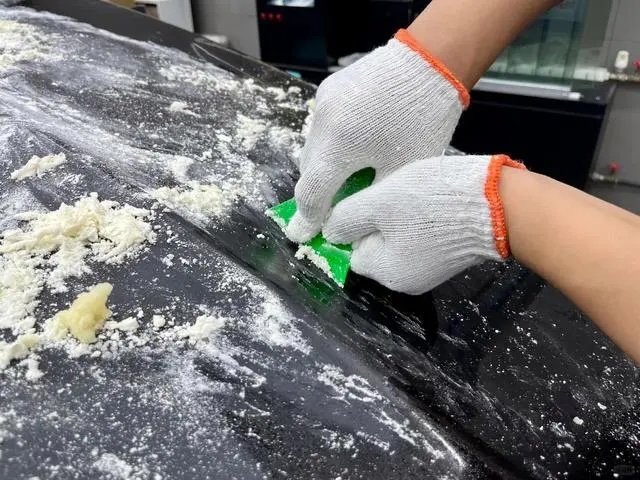What Is The Hydrolysis of PPF Wrap?
TPU PPF wrap and TPH PPF wrap play an important role on the vehicle paint protection. High quality PPF wrap is strong wear-resistant, anti-yellowing, improve the car paint, and resist the damage from various environmental factors. However, the hydrolysis problem been the biggest issue of PPF wrap. What is the hydrolysis of PPF wrap?

Hydrolysis is a type of chemical reaction that causes the coating dissolve with glue, which usually occurs on polyester TPU car covers. The hydrolysis reaction of PPF wrap is caused by the interaction of water molecules with the ester groups of the TPU base material, resulting in the breaking of the molecular chain. Eventually, the TPU base film material will decompose into a sticky substance and adhere to the surface of the car body. Due to the presence of easily hydrolyzed ester groups, polyester TPU is most likely to hydrolyze under the combined attack of light and rain within 6 months to 3 years!
How to avoid the hydrolysis problem of PPF wrap?
1. Select the PPF wrap with aliphatic polycaprolactone TPU base film. Polycaprolactone aliphatic TPU masterbatch has excellent mechanical strength, oil resistance, chemical resistance, wear resistance and tear resistance, and does not have an ester group which is relatively easy to hydrolyze.
2. Select low initial viscosity adhesive glue ton ensure that degumming is not easy to occur when tear off the PPF wrap.
3. Keep the car body dry, avoid the water accumulation. No park the car in a humid environment for long term.
POLYSAN is engaged in developing and producing high quality TPU PPF wrap and TPH PPF wrap, anti-yellowing, high toughness, ultra-high clarity and light transmittance, self-healing and non-hydrolyzable.

 English
English  Русский
Русский  Deutsch
Deutsch  Français
Français  Português
Português  Español
Español  Italiano
Italiano  العربية
العربية  한국어
한국어  Türkçe
Türkçe 